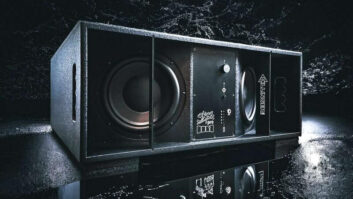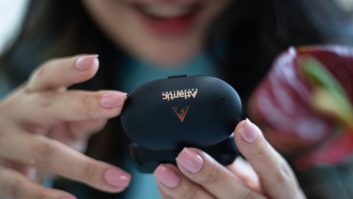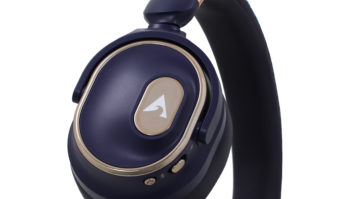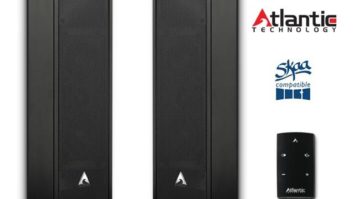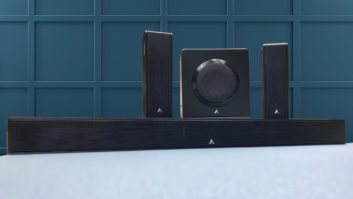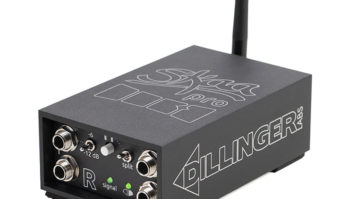NEW YORK – Audio companies are entering the wireless multiroom audio market, adding new wireless devices and upgrading their existing products to take advantage of demand in a market whose unit sales of Wi-Fi speakers will almost double this year in the U.S.
Futuresource Consulting forecasts U.S. factory- level sales of Wi-Fi speakers will grow this year by 89 percent to 1.95 million. The statistics combine Wi-Fi-only speakers with speakers incorporating both Wi-Fi and Bluetooth. The numbers exclude Wi-Fi streamers that connect to existing stereo systems and Wi-Fi streamers with built-in amps to drive a passive speaker pair.
Of the 1.95 million Wi-Fi and Wi-Fi/Bluetooth speakers that will be sold, 28 percent will incorporate Wi-Fi and Bluetooth, up from 2013’s 6.7 percent, Futuresource said.
With these numbers in mind, Denon entered the wireless multiroom audio market, NAD launched more sophisticated wireless multiroom audio technology than it previously offered, Creston made it easier to add AirPlay to its installed multiroom audio systems, and Pure and Samsung added new features to their wireless multiroom audio systems.
The wireless opportunity is even greater when sales of Bluetooth-only speakers are factored in, Futuresource said. Combined factory sales of Bluetooth- only, Wi-Fi-only, and Wi-Fi/Bluetooth speakers in the U.S. will grow 58 percent in 2014 to 10.8 million units, with Bluetooth-only speakers accounting for 8.86 million of those sales, or 82 percent of all wireless speaker sales.
The wholesale value of all types of wireless speakers sold in the U.S. will rise 46 percent in 2014 to almost $1.6 billion, Futuresource said.
For details on new Bluetooth-only speakers launched to surf the growth wave.
New Wi-Fi speakers and related Wi-Fi-based multiroom audio products are on the way from the following companies:
Crestron launched an AirPlay-equipped Wi-Fi streamer that can be used with its installed multiroom audio systems to distribute audio from an Apple mobile device throughout the house.
The CEN-NSP-1 overcomes a key AirPlay limitation that restricts streaming from an Apple mobile device to only one AirPlay-equipped speaker at a time.
The device will also be equipped sometime in the future with native music-streaming apps, the company said.
With the device, whose price was not disclosed, consumers can use a Crestron app on their mobile device or an installed Crestron touch screen to direct the Apple device’s music, including music from streaming apps, to every room in the house, the company said.
On top of that, the stream player connects via USB 2.0 to an iPhone, iPad or iPod, enabling consumers to use their Creston app or a Crestron touchscreen to browse, search, and select songs stored on the Apple devices.
Denon will become the latest home-audio supplier to offer a home-wide wireless multizone-audio system with the launch of its first Heos-series products in late June with key partners. Additional distribution starts in August.
The first products consist of three single-chassis tabletop Wi-Fi speakers at a suggested $299, $399 and $599. They will be followed in September by a Heos Amp, which connects to passive speakers, and the Heos Link preamp, which connects to an outboard amplifier and passive speakers. Prices on the latter two devices weren’t disclosed.
The Amp and Link will also connect to A/V receivers, and if connected to Denon AVRs, “there will be some special functionality,” said Brendon Stead, Denon product development VP.
The system will be controlled from Denon’s iOS and Android Controller apps, which incorporates a DLNA server to distribute smartphone- and tablet-stored music to the DLNA-equipped Heos devices. The apps will also distribute music stored on USB sticks and USB hard drives plugged into a Heos device’s USB port. And with a planned software upgrade targeted for August, the apps will select music stored on DLNA-enabled PCs and NAS drives for multiroom playback.
At launch, the Heos devices will incorporate Pandora, TuneIn, Rhapsody, and one other streaming service, with more added on a quarterly basis, Stead said.
The products incorporate dual-band Wi-Fi 802.11n and Ethernet port. Denon will also offer a wireless range extender, which will extend Wi-Fi range to Heos devices and to any other Wi-Fi device.
With a Heos Controller app, users can send “multiple types of content to multiple speakers with the same or different volumes,” Stead said.
A major Heos differentiator, he said, is the ability of multiple app-equipped smartphones and tablets to interact simultaneously with a Heos system. “Anyone with the app can add songs to play queues,” Stead explained.
The system supports eight Wi-Fi zones, each playing back a different stream when the app is in family mode. All eight streams can reside on the phone, on a USBconnected device, or on a networked PC or NAS drive.
Pure upgraded its Jongo multizone Wi-Fi speaker system to let users stream music from any audio or music service app on their smartphone and tablet to multiple rooms at a time.
Other wireless multizone speaker systems, in contrast, limit music-streaming services to those integrated into their smartphone or tablet controller app, often limiting the third-party app’s functionality, the company said.
The upgrade, available as a software update, leverages Bluetooth to enable the new feature. Consumers stream music via Bluetooth from one of their existing music apps to a single Jongo speaker, which is equipped with both Bluetooth and Wi-Fi. That speaker in turn acts as a master speaker to stream the content via a home’s Wi-Fi network to Jongo speakers in other rooms.
Consumers will be able to use the full and original version of a streaming app, such as Pandora or Spotify, without having to run the company’s Pure Connect controller app for Android and iOS devices, the company said. Consumers would have to use the Pure Connect app only if they want to stream music stored on their mobile device or from a networked computer, set up stereo pairs, or remotely manage balance, bass, treble and volume of individual speakers.
The upgrade also lets consumers distribute audio from any music-streaming service streamed from a Bluetooth-connected laptop.
Like before, the Pure Connect app lets users stream device-stored music via Wi-Fi to one or more Wi-Fi-equipped Jongo speakers or to a Jongo streamer connected to a stereo system. The app also lets users select music stored on a PC or NAS drive for playback on Jongo speakers. The app also accesses 20,000 Internet radio stations, 200,000 free on-demand programs and podcasts, and, for a fee, on-demand access to Pure’s 15 million Cloud-based songs. Likewise, laptops also could previously access the Internet radio stations and subscriptions service.
Samsung added Spotify Connect technology to its Shape wireless multiroom audio products in a way that makes them the first multiroom audio products to overcome a previous Spotify Connect limitation.
Samsung’s Wi-Fi-equipped Shape products consist of two active speakers, a streaming adapter, a soundbar, two Blu-ray HTiBs and one Blu-ray player.
Spotify Connect, unveiled last year, is a Spotify upgrade that lets consumers switch instantly from streaming a Spotify playlist via cellular on a smartphone to streaming Spotify through a networked home audio product when they get home. At launch, however, a single Spotify Connect user could not stream Spotify to multiple networked home audio products at one time.
With Samsung’s implementation, the company’s Wi- Fi-equipped Shape multiroom-audio products become the first products that let Spotify Connect users stream to two or more networked-audio products at a time.
Spotify Connect also lets users stream to Connectenabled products without leaving the Spotify app.







